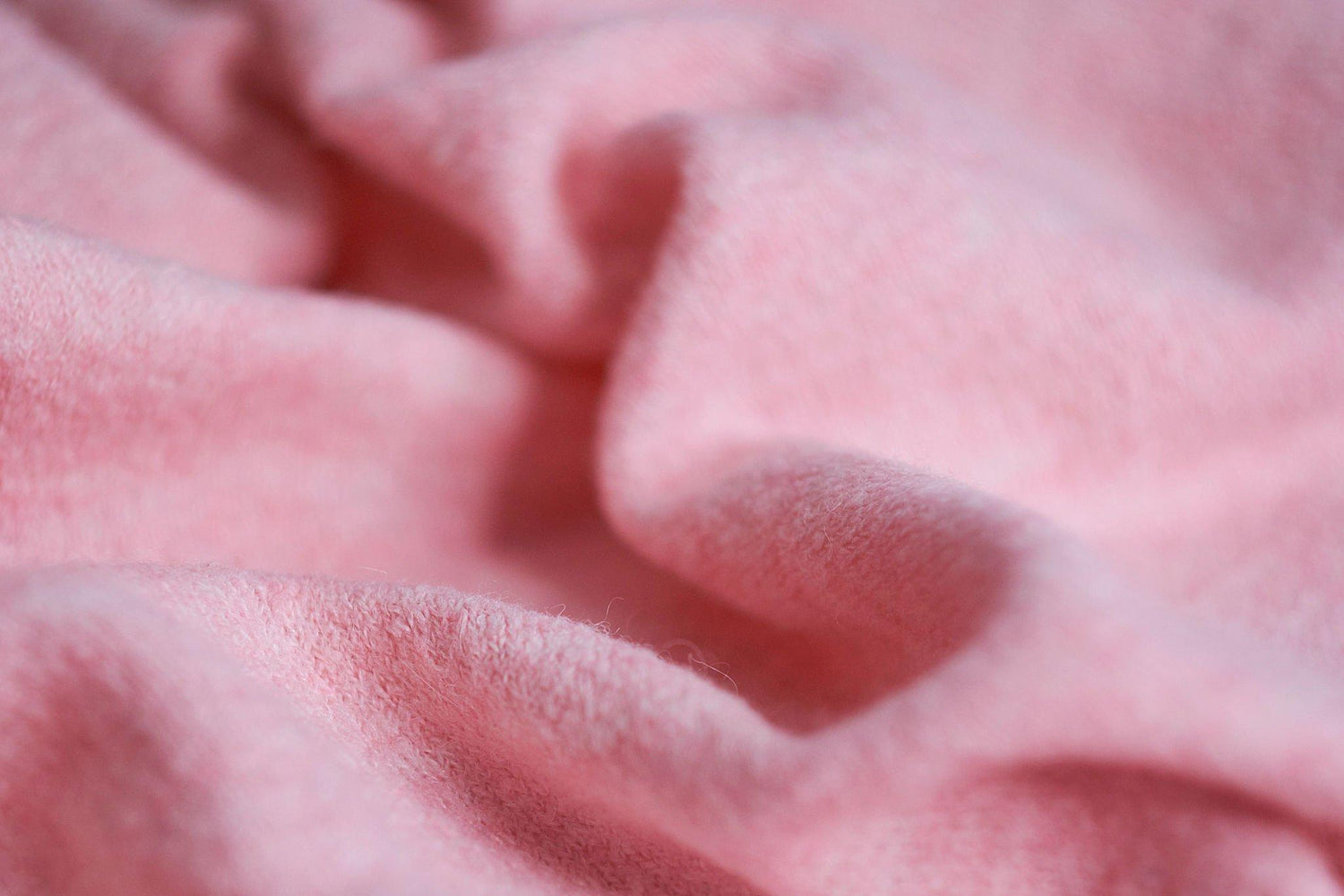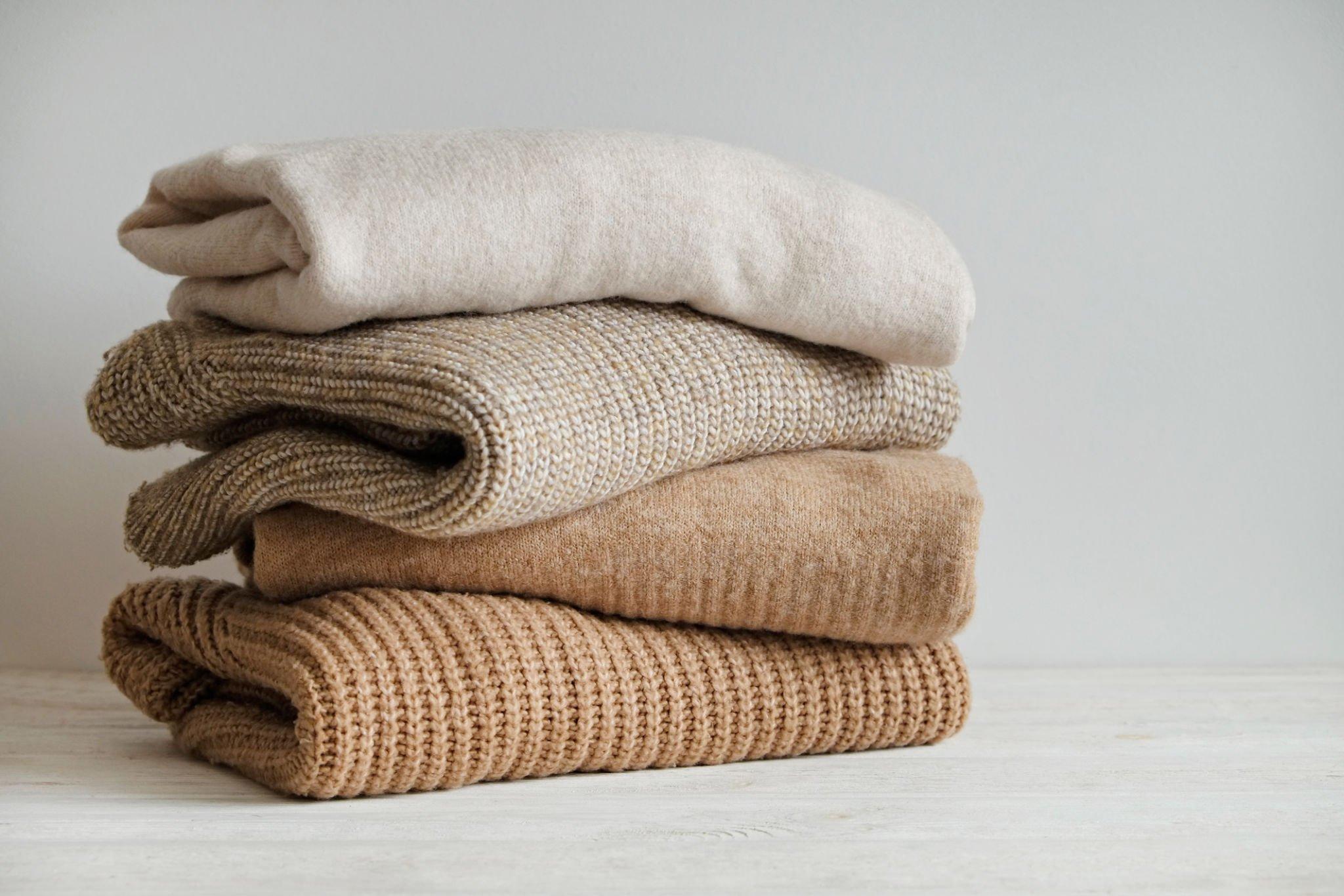If you've ever owned a piece of cashmere apparel, be it a shawl, sweater or a wrap, you might notice little balls or clumps of fiber forming on the surface at some point.
Often referred to as "pills," these small formations can be disconcerting, especially when you've invested in a genuine pashmina piece. Pilling is common with a fabric like cashmere or pashmina and it can happen for various reasons.
While it's not necessarily a reflection of the quality of cashmere, if not addressed in time, these pills can accumulate, leading to a rough texture, diminished aesthetic appeal, and you run into risks of damaging it.
In this guide, we'll explain why pilling occurs in cashmere and offer tips from our artisans to prevent and manage it.
Let's get started...
Why Does Pilling Happen in Cashmere?
As we already mentioned above, pilling is the formation of small, fuzzy balls on the surface of the fabric and usually happens because of the following reasons:
- Nature of the Fiber: Cashmere fibers are delicate, fine, and have a natural tendency to loosen when you start wearing it. Pilling occurs because loose fibers, which might not be set into the knit or weave, start to come to the surface.
- Friction: When cashmere is rubbed against external surfaces (like the inside of a jacket) or even itself, the fibers start to twist and tangle together, forming pills.
- Shorter Fibers: During the processing of cashmere, shorter fibers can get mixed in with the longer ones, which is more common in lower-quality products. The shorter fibers find it easier to detach and clump together on the fabric's surface forming pills.
- Washing and Handling: Aggressive washing, be it by hand or machine, can stress the fibers, making them more likely to pill. Additionally, if you are wringing out the material or exposing it to high temperatures to dry, your cashmere can pill.
Is Cashmere Pilling a Sign of Poor Quality?
A common misconception is that pilling is a sign of lower quality cashmere. This isn't necessarily true.
Even the finest and most genuine cashmere, can show signs of pilling, especially when new. As the fabric is worn and washed, loose fibers come to the surface, which can lead to initial pilling.
This pilling will reduce but you'll still need to make sure to take care of your cashmere from time to time.
How to Remove Pilling from Cashmere
You can remove pilling from your cashmere yourself. The process is really straightforward.
Here's a step-by-step guide to effectively remove pilling from your cashmere:
Step 1: Lay the Item Flat
On a clean, flat surface, spread out your cashmere. Ensure that you have enough light so you can easily identify all areas with pills.
Step 2: Use a Cashmere Comb
A cashmere or wool comb is a tool specifically designed for de-pilling delicate fabrics.
Gently brush the comb over the pilled areas in one direction. Do not to tug or pull the fabric.
The comb will lift and remove the pills from the fabric.
Step 2 (Alternative): Use a Fabric Shaver
A fabric shaver is a a battery-operated device that trims pills. If you are using it instead of the comb, make sure that it's on gentle setting and always move in one direction.
Step 3: Hand Pick for Stubborn Pills
For pills that are challenging to remove with a comb or shaver, you can carefully pick them off using your fingers.
Be cautious not to pull too hard or you might end up with a hole.
Step 4: Gently Shake and Reshape
Once you've removed the pills, shake your cashmere to remove any loose fibers and reshape it, especially if it's a sweater or any form-fitting garment.
Step 5: Wash and Dry with Care
After de-pilling, wash the cashmere to remove any loosened fibers. Always hand wash in cold water with a mild detergent after de-pilling and let it air dry.
Step 6: Store Properly
Always store your cashmere in a cool, dry place.
If you are storing it for next season, use a breathable bag to prevent it against moths and dust.
Remember, regular maintenance is the key to prolonging the life and beauty of your cashmere items.
How Often Should You Remove Pilling?
If you wear a particular cashmere frequently, like a favorite sweater, you might find yourself needing to de-pill it every few wears, especially in high-friction areas like under the arms or around the cuffs.
For items that you don't wear often, a mid-season de-pilling might suffice. For instance, if you wear a cashmere shawl from Plushmina, removing pills once during the season should keep it looking fresh.
We also recommend our customers to de-pill cashmere at the end of the season before storing it. This way, when you retrieve it for the next season, it's in pristine condition and ready to wear.
It's always a good idea to de-pill your cashmere as soon as you notice significant pilling. This not only maintains the item's aesthetic appeal but also ensures that smaller pills don't grow larger.


